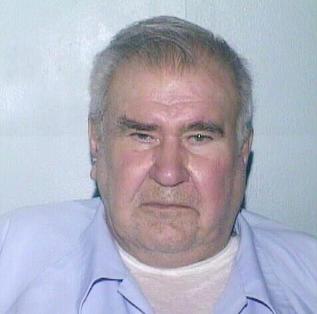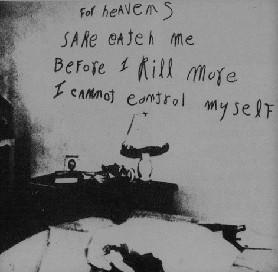
1928 - 2012
William George Heirens
Summary
Name:
Nickname:
The Lipstick KillerYears Active:
1945 - 1946Birth:
November 15, 1928Status:
DeceasedClass:
Serial KillerVictims:
3Method:
Stabbing / Shooting / DecapitationDeath:
March 05, 2012Nationality:
USA
1928 - 2012
William George Heirens
Summary: Serial Killer
Name:
William George HeirensNickname:
The Lipstick KillerStatus:
DeceasedVictims:
3Method:
Stabbing / Shooting / DecapitationNationality:
USABirth:
November 15, 1928Death:
March 05, 2012Years Active:
1945 - 1946bio
William George Heirens was born on November 15, 1928, in Evanston, Illinois. He grew up in Lincolnwood, a suburb of Chicago. His parents were George and Margaret Heirens. George's family immigrated from Luxembourg, and Margaret was a homemaker. The Heirens family faced financial difficulties. They often argued, which made life tense at home. To escape the fighting, young William wandered the streets and became involved in petty crime. He later said that he mainly stole to relieve stress and never sold the things he took.
When Heirens was 13 years old, he was arrested for carrying a loaded gun. The police later searched his home and found many stolen items, including weapons and jewelry, hidden in a storage shed nearby. He confessed to committing 11 burglaries and was sent to Gibault School for wayward boys for several months.
After leaving Gibault, Heirens was arrested again for theft. He was sentenced to three years at St. Bede Academy. While at St. Bede, he excelled in his studies. At 16, he was accepted into a special learning program at the University of Chicago just before his release in 1945.
To help pay for his education, Heirens worked part-time as an usher and docent. However, he returned to stealing during this time. A classmate of his recalled that he was popular with girls.
murder story
On June 5, 1945, Josephine Ross was found dead in her Chicago apartment. She had been stabbed multiple times, and her head was covered with a dress. Police investigated but could not identify a man who had been seen leaving the scene.
On December 10, 1945, Frances Brown was discovered in her apartment with a knife in her neck and a gunshot wound to her head. There was lipstick written on the wall saying, "For heAVens SAKe cAtch me BeFore I Kill More I cAnnot control MyselF." A bloody fingerprint was found at the scene, and a witness reported hearing gunshots that night.

On January 7, 1946, six-year-old Suzanne Degnan was kidnapped from her home. A ransom note demanding $20,000 was found, and police received calls from the kidnapper. Later, parts of Suzanne’s dismembered body were discovered in nearby sewer drains.
William Heirens was arrested on June 26, 1946, for attempted burglary. Under harsh police interrogation, which included being deprived of food and sleep, Heirens confessed to the murders. He claimed his alter ego, George, was responsible for the crimes.
Heirens had been subjected to sodium pentothal, a drug commonly referred to as "truth serum," during interrogation. This method of questioning is now regarded as unreliable. His confession contained many inconsistencies and did not align with the known facts of the crimes.

Evidence against Heirens included handwriting analysis of the lipstick message and fingerprints found at the crime scenes. However, there were disputes about the credibility and handling of this evidence.
Despite these disputes, Heirens was convicted on August 7, 1946, for the murders of Josephine Ross, Frances Brown, and Suzanne Degnan. He was sentenced to life imprisonment. Over the years, Heirens tried to recant his confession and maintained he was innocent, arguing that he was coerced into confessing.
Heirens continued to serve his sentence until he died on March 5, 2012, at the age of 83. His case remains controversial, with arguments regarding the validity of his confession and the evidence against him.